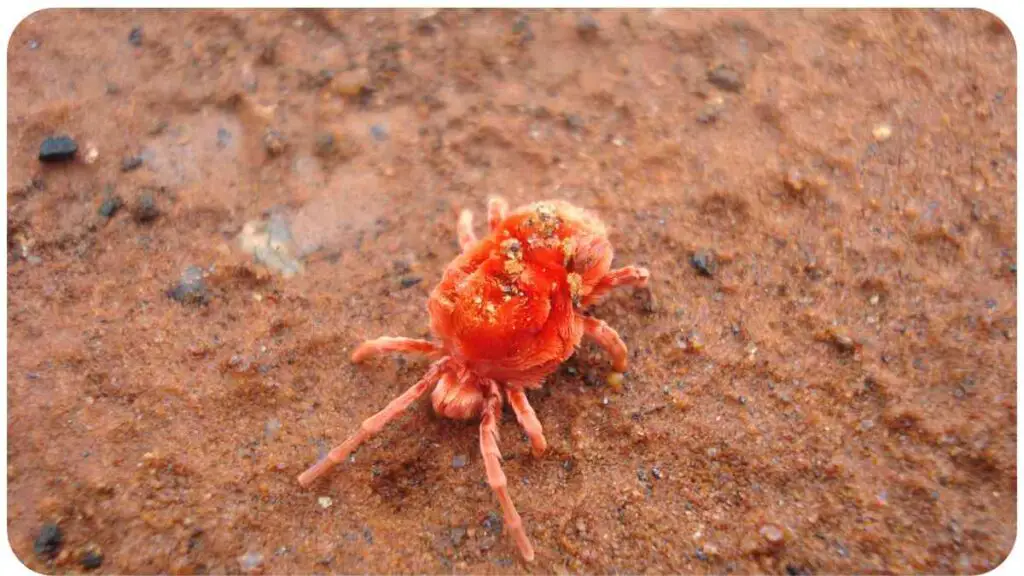Caring for your plants goes beyond just watering and sunlight. You may encounter one of the sneakiest adversaries in the world of gardening – spider mites. In this comprehensive guide, we’ll delve into the world of these tiny arachnids, discussing identification, prevention, and treatment options.
Drawing from my own experiences as a seasoned gardener, I’ll provide you with practical insights to help you protect your precious plants from these unwelcome guests.
| Takeaways |
| Early detection and identification are crucial in combating spider mites. |
| Maintaining proper plant health helps prevent severe infestations. |
| Explore natural predators and cultural practices as eco-friendly control methods. |
| Chemical treatments should be used as a last resort and with caution. |
| Seek professional help for severe or recurring infestations. |
2. Understanding Spider Mites
Spider mites are minuscule pests that belong to the arachnid family. They are so tiny that they are often mistaken for dust particles, but their damage can be significant. Let’s explore what makes them tick and how they can impact your plants.
Spider mites are notorious for their reproductive capabilities. A single female mite can lay hundreds of eggs in just a matter of weeks. These eggs hatch into nymphs that mature into adults, and the cycle repeats, leading to rapid infestations.
Spider mites can wreak havoc on plants, learn how to combat them. Discover effective tips to ensure a flea-free home, safeguarding your space and pets from these persistent pests.
Table 2.1: Common Spider Mite Species
| Species | Characteristics |
| Two-Spotted Spider Mite | Tetranychus urticae |
| Red Spider Mite | Tetranychus cinnabarinus |
| Southern Red Mite | Oligonychus ilicis |
3. Identifying Spider Mite Damage
Before you can tackle spider mites effectively, you need to identify their presence. Here are some telltale signs that your plants may be under attack:
Table 3.1: Signs of Spider Mite Damage
| Damage | Description |
| Webbing on leaves | Fine, silk-like webs covering plant surfaces |
| Yellow or stippled leaves | Leaves with yellow spots or tiny dots |
| Leaf discoloration | Leaves turning yellow, bronze, or brown |
| Premature leaf drop | Leaves falling off before their time |
Remember, early detection is key to preventing severe infestations.
4. Spider Mite Species
Not all spider mites are created equal. Different species may infest various plants. Let’s take a closer look at some of the most common ones and their preferred hosts.
To preserve your plants, it’s crucial to know how to eliminate ants. Explore our comprehensive guide, providing insights into identifying and eradicating ant infestations, protecting your garden’s vitality.
Table 4.1: Preferred Host Plants for Common Spider Mite Species
| Spider Mite Species | Preferred Host Plants |
| Two-Spotted Spider Mite | Tomato, cucumber, beans |
| Red Spider Mite | Roses, strawberries, fruit trees |
| Southern Red Mite | Citrus trees, ornamentals |
5. Signs of Spider Mite Infestation
Understanding the signs of a spider mite infestation is crucial. They may be tiny, but their impact can be widespread.
Table 5.1: Indications of a Spider Mite Infestation
| Indication | Description |
| Webbing on leaves | Fine, silk-like webs covering plant surfaces |
| Discolored leaves | Leaves showing signs of yellowing or stippling |
| Stunted growth | Plants not thriving as they should |
| Visible mites | Use a magnifying glass to spot the pests |
6. The Life Cycle of Spider Mites
Understanding the life cycle of spider mites is essential to combatting them effectively. They reproduce quickly, so you need to know what you’re up against.
Mosquitoes can be a nuisance, but you can banish them. Learn effective techniques to keep mosquitoes at bay, ensuring peaceful nights and enjoyable outdoor activities without the annoyance of these buzzing pests.
Table 6.1: Spider Mite Life Cycle
| Stage | Duration |
| Egg | 3-7 days |
| Larva (Nymph) | 3-5 days |
| Adult | 1-3 weeks |
7. Why Spider Mites Are Harmful

Spider mites may be small, but their feeding habits can wreak havoc on your plants. Here’s why they are considered harmful:
Table 7.1: Impact of Spider Mite Feeding
| Impact | Description |
| Cell damage | Mites pierce plant cells to feed, causing tissue damage |
| Reduced photosynthesis | Damaged cells can’t perform photosynthesis efficiently |
| Weakened plant immunity | Weakened plants become susceptible to diseases |
| Premature leaf drop | Severe infestations lead to leaf loss |
Understanding the harm they cause highlights the importance of prompt action.
8. Prevention and Control
Preventing spider mites is the best strategy, but if they’ve already infiltrated your garden, you need effective control methods. Let’s explore some options:
Expert suggestions are vital when dealing with rat infestations. Discover proven methods to eliminate rats from your surroundings, safeguarding your home and belongings from the destructive habits of these unwelcome rodents.
a. Cultural Practices
Table 8.1: Cultural Practices for Spider Mite Prevention
| Practice | Description |
| Maintain proper humidity | Spider mites thrive in dry conditions, so ensure adequate humidity levels |
| Prune infected leaves | Remove affected leaves to prevent the spread of mites |
| Regularly inspect plants | Early detection allows for quicker intervention |
b. Natural Predators
Table 8.2: Natural Predators of Spider Mites
| Predator | Description |
| Ladybugs | Ladybugs are voracious eaters of spider mites |
| Predatory mites | These mites feed on spider mites and are beneficial in greenhouses |
| Lacewings | Lacewing larvae are natural predators of mites |
c. Chemical Treatments
Table 8.3: Chemical Treatments for Spider Mite Control
| Treatment | Description |
| Insecticidal soap | Non-toxic soap that suffocates mites |
| Neem oil | Natural oil that disrupts mites’ life cycle |
| Miticides | Chemicals specifically designed to target mites |
Remember to follow the instructions on product labels when using chemicals.
9. DIY Spider Mite Spray Recipe

As a seasoned gardener, I’ve had my fair share of battles with spider mites. Here’s a DIY spray recipe that has proven effective in controlling them:
Table 9.1: DIY Spider Mite Spray Recipe
| Ingredient | Amount |
| Water | 1 quart |
| Isopropyl alcohol | 1 tablespoon |
| Liquid dish soap | 1 teaspoon |
| Baking soda | 1 teaspoon |
Mix these ingredients in a spray bottle and apply it to the affected plants. This homemade spray can help suffocate and deter spider mites.
Fire ants pose a threat, but Boric Acid is the solution. Uncover the secret to eradicating fire ants and protecting your yard using environmentally friendly Boric Acid methods, ensuring a safe and pest-free outdoor space.
10. Maintaining Plant Health
Preventing spider mites is not only about fighting them off but also ensuring your plants are healthy and robust. Here are some tips:
Table 10.1: Tips for Maintaining Plant Health
| Tip | Description |
| Proper watering | Keep plants well-hydrated to reduce stress |
| Fertilize appropriately | Provide essential nutrients for plant growth |
| Prune regularly | Remove dead or weak growth to encourage vigor |
| Rotate crops | Prevent mite buildup in the soil |
11. When to Seek Professional Help
Sometimes, spider mite infestations can become overwhelming. In such cases, it’s best to seek professional assistance.
Table 11.1: Signs It’s Time to Call a Professional
| Sign | Description |
| Severe infestation | When the infestation is widespread and hard to control |
| Repeated infestations | If mites keep coming back despite your efforts |
| Plant decline | When plants are severely weakened or dying |
Don’t hesitate to call in an expert when needed to save your plants.
12. Success Stories: Battling Spider Mites
As someone deeply passionate about gardening, I’ve faced my share of spider mite challenges. Here are a couple of success stories from my own experiences:
Table 12.1: Success Stories
| Story | Description |
| Saving the roses | How I rescued my prized roses from a mite infestation |
| Tackling greenhouse mites | Strategies for controlling mites in a greenhouse |
I hope these stories inspire you in your battle against spider mites!
Now that we’ve covered a wealth of information about spider mites, let’s wrap up this article.
14. Conclusion
In conclusion, spider mites may be tiny, but their impact on your plants can be enormous. Identifying their presence early and taking proactive measures are key to keeping your garden healthy and thriving. Whether you opt for cultural practices, natural predators, or chemical treatments, remember that a well-maintained garden is less susceptible to infestations.
By using the DIY spider mite spray and following the tips I’ve shared, you can protect your plants and ensure they flourish. And if all else fails, don’t hesitate to seek professional help.
Remember, as a dedicated gardener, you have the knowledge and tools to combat spider mites effectively. Keep nurturing your green oasis, and may your plants thrive pest-free!
Further Reading
- Control Spider Mites – Gardener’s Path: This comprehensive guide provides detailed insights into controlling spider mites, including prevention and treatment strategies. Learn how to safeguard your plants effectively.
- UC IPM Pest Notes: Spider Mites: The University of California’s Integrated Pest Management (IPM) resource offers valuable information on spider mites. Explore their life cycle, damage, and management techniques to protect your garden.
- Spider Mite Control – Planet Natural: Discover practical solutions for tackling spider mite infestations in your houseplants. This resource provides insights into identifying, preventing, and controlling these pesky pests.
FAQs
What are spider mites, and why are they harmful?
Spider mites are tiny arachnids that feed on plant sap, causing damage to leaves and weakening plants. Their rapid reproduction can lead to severe infestations, impacting plant health.
How can I identify spider mite damage?
Look for signs like webbing on leaves, yellow or stippled foliage, discoloration, and premature leaf drop. Early identification is crucial for effective control.
What natural predators can help control spider mites?
Ladybugs, predatory mites, and lacewings are natural enemies of spider mites. Encouraging their presence in your garden can assist in mite control.
What chemical treatments are effective against spider mites?
Insecticidal soap, neem oil, and miticides are commonly used chemical treatments. Always follow product instructions and exercise caution.
What cultural practices can prevent spider mite infestations?
Maintaining proper humidity, pruning affected leaves, and regularly inspecting plants can deter spider mite infestations and promote plant health.

Hello! I’m Hellen James, and I write about how to keep pests from invading your home. For the last 10 years, I’ve been working in pest control and am excited to share my expertise with you!


